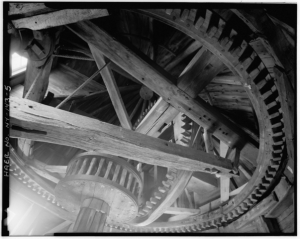As I was fishing with the grandkids recently, the eldest asked me why windmills look the way they do these days, instead of the way they looked in the old days and in cartoons.

Pantigo Windmill, East Hampton
I didn’t know, so when we got home later that day I helped him look it up. I’d rather admit I don’t know something to a kid and then help him research than just make something up or just brush off the question. Plus, it helps teach kids how to learn things themselves.
The answers regarding the windmills turned out to be pretty interesting, even if a lot of the math was still beyond him.
First off, the arms on a windmill are long and thin these days in order to function like a wing, which drastically increases their efficiency. So far, pretty straightforward stuff.
Next, and the most complicated: why they have three arms. Turns out there’s a whole load of math involved. A single arm would be most efficient, but wouldn’t produce much power. Two arms at 180 degrees actually puts considerable strain on the hub of the windmill, which reduces the energy it produces and causes long-term strain and damage.
Three blades solves all of these problems; using more than three starts to reduce efficiency. That’s not the only reason, of course. It also costs quite a bit more to build windmills with a larger number of blades.
The reason most windmill blades are a certain length is actually due to the shipping industry. Most of the blades are at the maximum length that can be carried by a semi on the highway. While there are some longer blades that can be transported by train and then by helicopter, they’re expensive and difficult to produce and move.
As for why windmills are painted white? My grandson actually figured that one out before we looked it up, which made me proud: The white paint reduces the heating on the windmill parts.
Plus, it just looks nice.